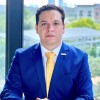The 2023 JPT article Brazil Moves Toward Becoming the First South American Nation to Pass CCS Legislation outlined Brazil’s legislative trajectory through engagement with the US Department of Energy (DOE) and diverse stakeholders, capturing the country’s position before enacting South America’s first carbon capture and storage (CCS) law in 2024. That same year, Brazil reinjected a record-breaking 14.2 million tons of carbon dioxide (CO₂) offshore in the Santos Basin, representing more than a quarter of global CO2 storage capacity in operation in 2024 and demonstrating technical maturity for non-enhanced oil recovery (EOR) capture.
Today, the law, which the Society for Low Carbon Technologies (SFLCT), a US-founded and globally operating nongovernmental organization (NGO), helped shape along with diverse stakeholders, is enabling key carbon capture outcomes: a post-law pilot at a drilled site co-located with an ethanol facility, planning across offshore and onshore areas, and the continent’s first direct air capture (DAC) infrastructure. This article examines the technical and regulatory architecture required to scale deployment and provides exclusive insight into Brazil’s accelerating CCS landscape.
2025 Updates and Regulatory Alignment
The global NGO is in direct dialogue with Brazil’s regulator, Agência Nacional do Petróleo, Gás Natural e Biocombustíveis (ANP). A key objective: to support Brazil’s regulatory advancement on CCS, recognizing that ANP—Brazil’s federal hydrocarbons and biofuels regulator—now holds notable authority over the carbon capture domain and regulations.
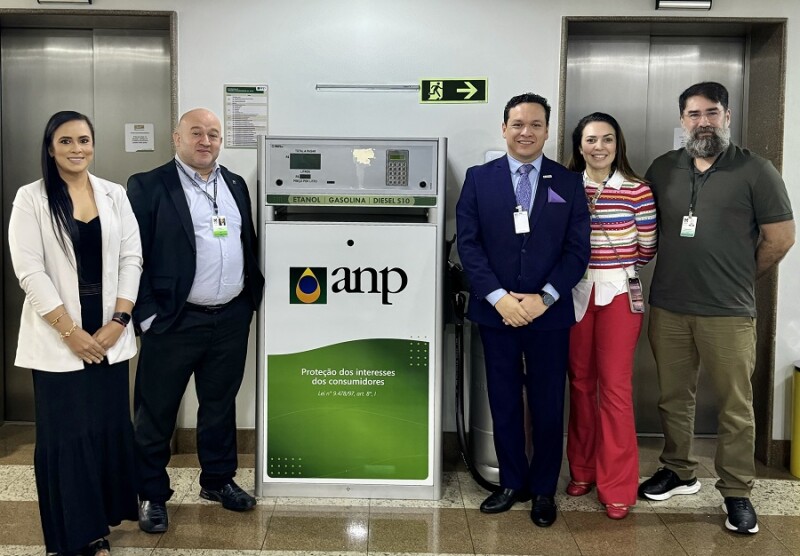
To this end, SFLCT draws on institutional experience through Vice Chair Alessandra Simone, who was involved in launching Canada’s first CCS project in 2015 and who, in 2009, co-authored and published A Technical Basis for Carbon Dioxide Storage, a seminal book to which Petrobras contributed and which is featured by the United Nations Framework Convention on Climate Change. Complementing these initiatives is the work of the NGO’s advisory member Zach Liu, director of subsurface at Harvestone Low Carbon Partners, which facilitated the delivery of the first CCS project at a US ethanol facility in 2023 following the watershed Inflation Reduction Act (IRA).
The US and Brazil, as the world’s top two ethanol producers, share an evolving ethanol-to-CCS trajectory. Brazil’s sovereign position is reinforced by a live CCS project led by Fueling Sustainability, monitored by ANP, and based on ethanol-derived sequestration without backing from major oil companies. This mirrors the way Archer Daniels Midland (ADM) helped initiate the US ethanol-to-CCS transition—distinct from projects such as Quest (Shell) or Sleipner (Equinor). In 2017, ADM became the first company in the US to inject CO2 for non-enhanced oil recovery (non-EOR) using a Class VI well permitted by the US Environmental Protection Agency (EPA). This pathway reinforces a shared blueprint in which the NGO holds field-proven institutional experience. This parallel between the US and Brazil is not incidental; rather, it serves as a calibrated template to Brazilian market actors, signaling that the ethanol sector offers a ready pathway to scale CCS domestically while reinforcing Brazil’s sovereign direction.
The Importance of Real-World CCS Experience
In June 2025, following the law’s enactment, the SFLCT announced its international and Brazilian coalition at the CCS Tech Summit in Rio de Janeiro to move regulatory efforts beyond advocacy. This debut occurred at the podium of the summit hosted by Interlink Exhibitions in the presence of Petrobras and Repsol-Sinopec Brasil.
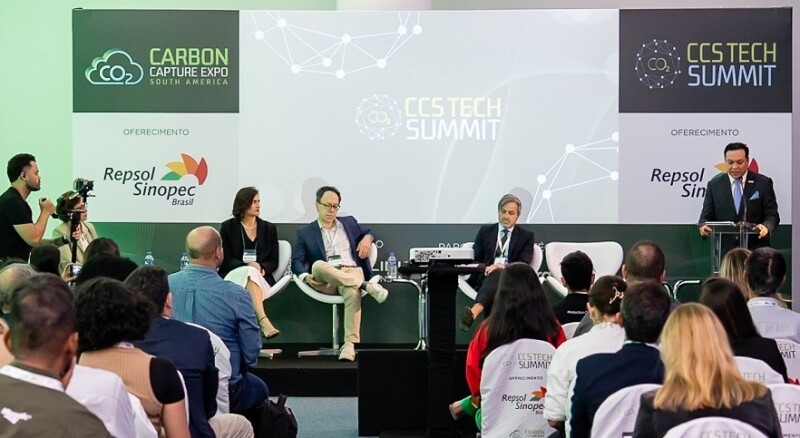
Representatives from ANP, the British consulate, and other low-carbon stakeholders were present. SFLCT Strategic Adviser Cassandra Dewan, whose leadership within the Society of Petroleum Engineers reinforces the NGO’s technical posture, also was in attendance to reinforce this effort.
The coalition, backed by real-world experience, supports Brazil’s sovereign regulatory transition, ensuring investor-grade clarity, safeguarding societal and environmental interests, and accelerating pilot-to-market scalability. Notably, ANP released its pivotal report Panorama Regulatória do Armazenamento Geológico de CO2 no Brasil, which outlined how the country is institutionally positioned to further regulate CCS.
Brazil is also advancing toward offshore injection, a milestone no country has yet fully achieved in terms of material progress on both land and offshore carbon capture projects. The US is making a push offshore, but no injection has commenced, and no precedent exists for how such projects will be regulated once operational.
Brazil’s offshore case is especially strong and provides a foundation for land-based expansion. The Santos Basin, with its scale; ultradeepwater floating production, storage, and offloading infrastructure; and operational maturity accounted for nearly 28% of global CO2 storage in 2024. While countries such as Indonesia and the United Kingdom show policy alignment for CCS, they do not yet possess Brazil’s applied field activity and storage maturity, which bolsters the impetus for global collaboration.
A Growing Differentiator
Petrobras’ $111 billion 2025–29 business plan reinforces Brazil’s decarbonization trajectory, with $16.3 billion allocated to CCS and other low-carbon initiatives, a 42% increase from prior commitments, including early-stage CCS hub development.
The shift from policy design to deployment is now measurable and accelerating. The 2023 article referenced the US DOE’s $1.2 billion investment in DAC hubs, which has not yet been formally replicated in Brazil, although there are conceptual echoes through early DAC and hub exploration. This parallel emerges in two domains: Brazil operates South America’s first DAC unit, commissioned in late 2024 in Porto Alegre through a strategic partnership between Repsol Sinopec Brasil and the Pontifical Catholic University of Rio Grande do Sul (PUCRS), with technical implementation led by PUCRS’s Institute of Petroleum and Natural Resources. This DAC unit was visited by the SFLCT and reflects a hemispheric alignment as Petrobras concurrently explores a national hub model as well as its own pilot projects on land and offshore.
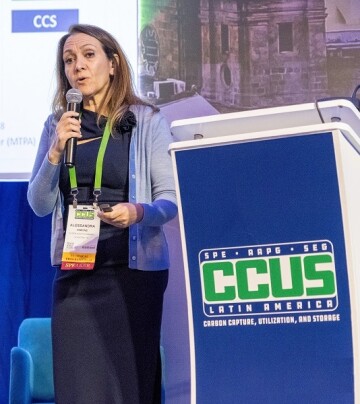
These developments emerge amid a global CCS inflection point. The US 45Q tax credit, which provides a fiscal incentive for CO2 sequestration, was strengthened by the IRA in 2025 through the One Big Beautiful Bill Act, particularly for utilization-linked storage. While Brazil has not implemented a domestic equivalent, this update demonstrates to investors the resilience and bankability of sequestration credits, even under political transition. This stands in contrast to other non-CCS IRA elements that were affected.
A New and Sovereign Frontier
Keeping with the theme of Brazil’s active CCS pilot from an ethanol plant, it is key to note that the project draws on sequestration frameworks from the EPA, the International Organization for Standardization’s (ISO) 27914 standard, and the California Air Resources Board (CARB), signaling a deliberate shift toward dedicated CO2 storage. This was publicly demonstrated by Fueling Sustainability at a hybrid workshop hosted by Brazil’s Ministry of Mines and Energy in July.
Canada, which launched the first CCS plant in the Western Hemisphere with the involvement of SFLCT’s Simone, operates under the Alberta Energy Regulator (AER) state-level directives rather than a unified federal framework like the EPA—although states such as North Dakota have obtained Class VI primacy. Amid these evolving international CCS frameworks, the SFLCT is supporting Brazil’s regulatory pathway, drawing on global best practices and real-world project experience. This positioning is reinforced by Simone, who brings nearly 2 decades of sequestration execution knowledge and was instrumental in launching Canada’s first CCS project. The NGO’s convening ability; technical neutrality; understanding of measurement, monitoring, and verification programs; and institutional experience with ethanol plants reinforce its grounding in executional realities, especially as Brazil advances ethanol-to-CCS initiatives.
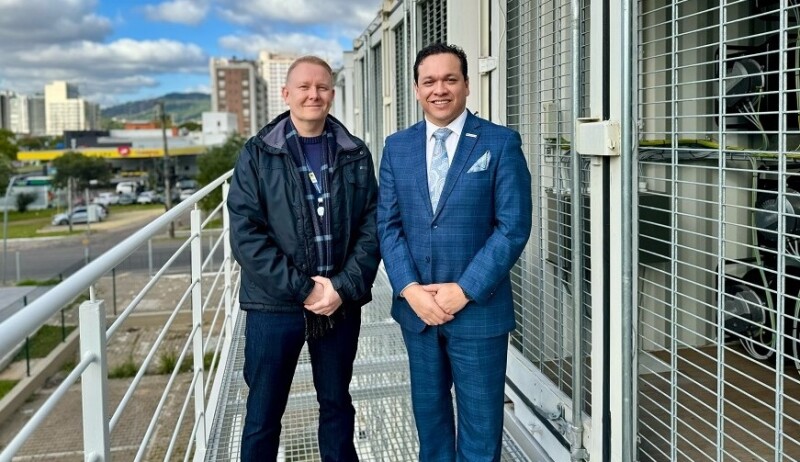
Conclusion
Brazil has entered its next inflection point: translating pilot deployment into regulatory codification. With DAC infrastructure commissioned, ethanol-linked injection underway, and offshore CO2 capture readiness emerging, the law has entered its implementation phase and now critically awaits regulatory certainty. ANP, as the statutory regulator, in many ways will be central to this transition. SFLCT, drawing on experience with field-tested frameworks (CARB, ISO 27914, EPA Class VI, AER, and other protocols), offers impartial support in Brazil and other nations. The South American nation’s trajectory, grounded in sovereign execution and the technical readiness described here, establishes the foundational architecture for scaling CCS in Brazil and offers a replicable model for other regions.


